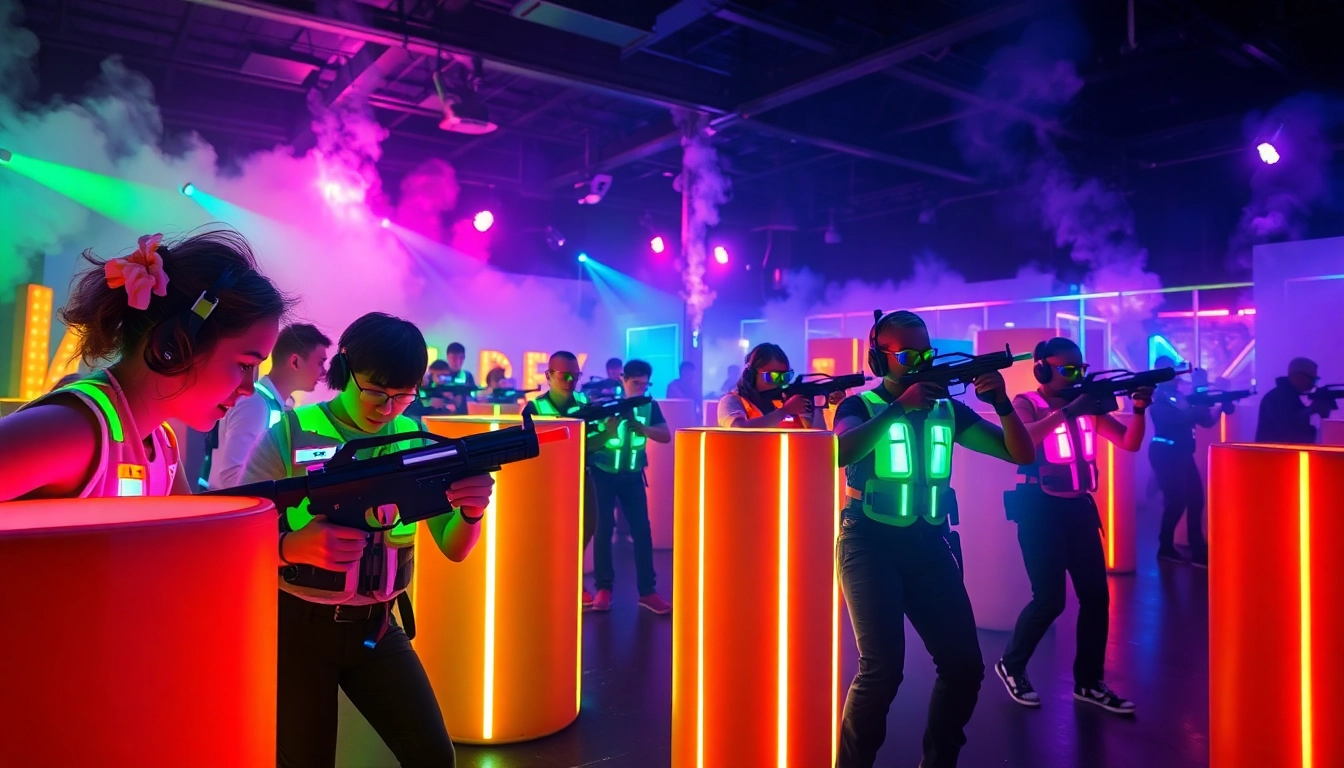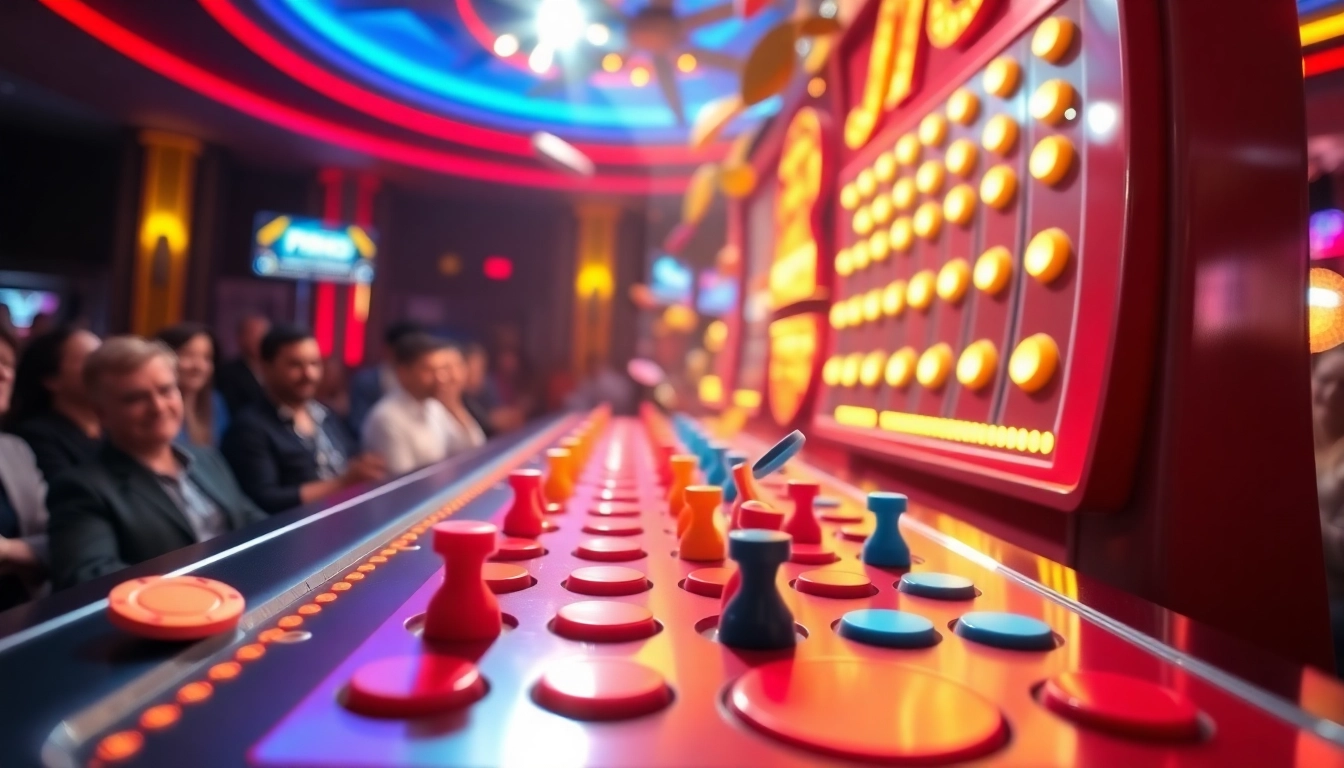Introduction to Laser Tag
Laser tag has evolved into a popular choice for entertainment, party activities, and team-building exercises across the globe. It’s not just a childhood game; it has adapted and transformed into a sophisticated activity enjoyed by people of all ages. Whether you are looking for adrenaline-pumping action or a strategic game that fosters teamwork, laser tag presents an exciting opportunity for fun and engagement.
What is Laser Tag?
Laser tag is a recreational shooting sport where players use infrared-emitting light guns to tag opponents and designated targets. Participants typically wear vests equipped with sensors that register hits, allowing for immediate feedback and scoring. The objective is often to accumulate points by tagging others, completing designated missions, or achieving specific game goals. This game combines elements of strategy, agility, and teamwork, making it an exhilarating experience for all involved.
History and Evolution of Laser Tag
The origins of laser tag can be traced back to the late 1970s, with its roots planted in military simulations. The game was initially developed as a training tool for soldiers to practice combat scenarios without causing real harm. As technology progressed, laser tag transitioned into a commercial entertainment industry during the 1980s. The invention of low-cost infrared sensors and lightweight laser guns made it accessible to the general public, leading to the establishment of various entertainment centers worldwide. Today, laser tag continues to evolve, integrating advanced technology such as virtual reality and interactive gaming features.
How Laser Tag Works: The Basics
The mechanics of laser tag are simple yet engaging. Players are armed with laser guns that emit infrared signals. Each gun is equipped with a targeting system that registers hits on opponents equipped with sensor vests. When a player is tagged, their vest will signal a hit through lights or sounds, effectively simulating the experience of being “out.” Games are typically played in specially designed arenas that may include obstacles, barriers, and various environmental setups to enhance the gameplay. Different game modes can introduce varying objectives, such as ‘Team Deathmatch,’ ‘Capture the Flag,’ or ‘King of the Hill,’ each offering unique strategies and challenges.
The Ultimate Laser Tag Experience
Choosing the Right Venue for Laser Tag
Selecting a venue is crucial for an enjoyable laser tag experience. Amenities, arena design, safety features, and the technological quality of the equipment are all important factors. Look for venues offering spacious and themed arenas that create an immersive environment. Additionally, consider indoor venues with climate control for year-round play, as well as locations with multiple game modes and sufficient staff to ensure smooth operations during gameplay. Facilities that incorporate high-tech features such as digital scoring systems and customizable game formats can elevate the experience further.
The Best Laser Tag Gear and Equipment
The gear used in laser tag significantly impacts gameplay. High-quality laser guns should be lightweight and ergonomically designed for ease of handling. Look for models with adjustable settings to cater to various player skill levels. Vests should be comfortable and fitted with multiple sensors for accurate hit detection. Additionally, advanced systems may include headbands or wrist sensors to expand gameplay capabilities. The use of LED indicators for player status, health, and game objectives can also enhance immersion during the game.
The Ideal Laser Tag Setup for Maximum Fun
A well-thought-out arena setup can tremendously influence the fun factor in laser tag. Consider creating zones with unique themes, such as futuristic cities, jungle environments, or post-apocalyptic landscapes. Interactive obstacles like walls, tunnels, and hiding spots add layers of strategy to the game. Efficient lighting and sound systems will also create an engaging atmosphere, while safety markings and clear pathways ensure player safety. Additionally, promoting a balance of open areas for quick engagements and tight spots for tactical gameplay can cater to various playing styles.
Strategies and Tips for Winning at Laser Tag
Teamwork and Communication in Laser Tag
Successful laser tag gameplay relies heavily on teamwork. Effective communication is paramount; teams should establish strategies and roles before the game. Players can employ different tactics—some may take on offensive roles, while others focus on defense. Keeping an eye on teammates’ positions and intentions can create opportunities for coordinated attacks or strategic retreats. Regularly discussing movements can enhance team cohesion and improve overall performance.
Understanding Game Modes and Objectives
Laser tag encompasses various game modes, each with its unique objectives. Understanding the goals of each mode can enable players to devise tailored strategies. For instance, in a ‘Capture the Flag’ scenario, one team must defend their flag while attempting to capture the opponent’s. Knowing when to engage and when to fall back is crucial. Familiarizing the team with the rules and objectives prior to gameplay can help streamline strategies and execution.
Advanced Techniques for Gameplay
To gain an edge in laser tag, players can benefit from advanced techniques. Mastering movement techniques is essential; constant motion makes players harder targets. Utilizing natural cover effectively to shield from opponents’ visibility can increase survivability. Additionally, players can use fakes and distractions, such as drawing fire away from an objective by pretending to engage an enemy elsewhere. Another effective strategy is to create a ‘crossfire’; having teammates positioned at different angles can overwhelm opponents and lead to easier tagging opportunities.
Hosting a Laser Tag Event
Planning Your Laser Tag Party
When organizing a laser tag event, meticulous planning is vital. Consider the age range, group size, and preferences of the attendees to ensure an engaging experience. Themes can add an extra layer of excitement; consider integrating costumes to create a more immersive environment. Scheduling time for both gameplay and breaks is important as well. Additional entertainment or refreshments can keep energy levels high and contribute to a festive atmosphere. Promotional materials, such as digital invites or themed decorations, can further enhance the experience.
Setting Up the Perfect Venue
Choosing the right venue for your laser tag event contributes significantly to the overall experience. It should accommodate your group size while providing the necessary facilities, such as secure storage for personal belongings, rest areas, and refreshment options. Ensure that the venue has trained staff to guide players through safety protocols and game rules before engagement. Setting clear boundaries for the arena is essential to prevent injuries, ensuring a fun and safe environment for all participants.
Safety Tips for Laser Tag Events
Safety during laser tag events should be a primary concern. Players should be briefed on arena rules and safety measures before gameplay. Gear, such as helmets or goggles, can be considered for additional safety. Emphasizing the importance of respecting designated play areas can prevent accidents and promote courteous play. Clear communication about player limits regarding aggression will help maintain a safe environment. Regular checks on equipment functionality can also minimize injury risk during intense gameplay.
Frequently Asked Questions about Laser Tag
Who Can Play Laser Tag?
Laser tag is designed to be inclusive, catering to a wide range of ages and abilities. Generally, children as young as six years old can participate, provided the equipment fits them comfortably. Family-oriented arenas frequently offer tailored sessions for younger players, ensuring a fun experience without overwhelming them.
How Much Does Laser Tag Cost?
The cost of laser tag can vary based on the venue, location, and types of packages offered. On average, players might expect to pay between $7 to $12 for a single game lasting approximately 5-15 minutes. Some venues provide package deals for multiple games, typically ranging from $12 to $20. Additionally, unlimited play options may be available, with prices ranging from $20 to $35 per person.
Is Laser Tag Safe for Kids?
Yes, laser tag is generally safe for children. The infrared lights used in laser tag are low-energy and non-harmful, comparable to remote control devices. However, supervision by adults is recommended, particularly for younger kids, to ensure compliance with the rules and safety protocols. Parents should assess the gameplay environment to ensure it is suitable for their child’s age and skill level.



